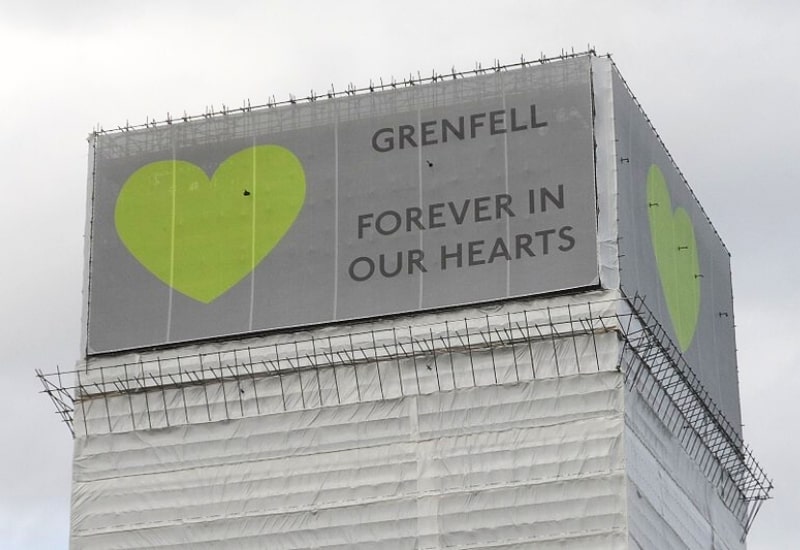Wonderful service from start to finish.
Phase II of the Grenfell Report: Critical Findings and Industry Implications

- Posted
- AuthorAndrew Cullyer

On 4 September 2024, Phase II of the Grenfell Enquiry Report was released, delivering an exhaustive assessment of the systemic failures that culminated in the Grenfell Tower fire. The report examines failings across multiple sectors, including government oversight, construction practices, building management, and emergency response.
Andrew Cullyer, Litigation Executive specialising in construction disputes at Warner Goodman LLP, delves into the key findings and their far-reaching implications for the construction industry.
Introduction: A Crisis of Accountability
The Grenfell Tower fire, which claimed 72 lives, was not an isolated incident but a culmination of widespread malpractices and negligence within the construction sector. The Phase II report spans seven volumes, each over 200 pages, and offers one of the most damning indictments of industry standards, regulatory oversight, and professional conduct.
While the full report's content is beyond the scope of a single article, we will focus on the central recommendations pertaining to construction products and practices.
Product Failures: A Catalogue of Deception
The report identifies specific culpability among manufacturers of critical building materials, particularly cladding and insulation products. It explicitly names Arconic, Kingspan, and Celotex as having engaged in sustained dishonest practices that compromised fire safety:
- Arconic: The manufacturer of Reynobond 55 PE, an aluminium composite material (ACM) cladding, concealed from the market the true extent of the product's fire risks, especially in cassette form on high-rise buildings.
- Kingspan: Developed and marketed the K15 insulation board for use on high-rise buildings between 2006 and 2019, despite knowing it was unsuitable and failed to meet fire safety standards. The report describes this as a "persistent dishonesty" driven by commercial gain and a disregard for safety.
- Celotex: Actively misled the market about the fire performance of its RS5000 insulation product, previously marketed as FR5000. Celotex falsely claimed a "Class 0 fire performance throughout" and promoted it for use on Grenfell Tower, knowing it was unfit for purpose.
Regulatory Gaps and Recommendations
The failures of product testing and certification organisations to identify and rectify these safety breaches are equally concerning. The report outlines several deficiencies in the oversight mechanisms that allowed unsafe materials to be used in high-risk buildings.
To address this issue, the report recommends establishing a single, centralised regulator with a comprehensive remit to oversee construction product safety, testing, certification, and compliance. This new regulatory body would have authority over:
- Regulation of construction products
- Development of standardised methods for testing fire reaction and resistance
- Certification of compliance with statutory requirements and industry standards
- Oversight of building control processes
- Licensing of contractors for work on higher-risk buildings
Although the UK government has already set up separate regulators for building safety and construction products, the report argues for a more unified approach to centralise authority and improve regulatory efficiency.
Structural Implications for the Industry
Implementing these recommendations would necessitate a significant restructuring of the industry. The proposed licensing scheme for principal contractors involved in constructing or refurbishing high-risk buildings could significantly limit market entry, potentially reducing the number of eligible firms to a small handful. This would likely increase construction costs and reduce competition, with potential implications for investment in such projects.
Additionally, the recommendation to hold directors and senior managers personally accountable for compliance with building safety regulations represents a marked shift towards individual liability. This could act as a deterrent against negligent practices, but it may also raise concerns about over-regulation and its impact on business operations.
The Ethical Dimension: A Call for Professional Integrity
A particularly striking insight from the report concerns Celotex's internal deliberations in 2013. When faced with the opportunity to expose the falsehoods by Kingspan regarding its products' fire safety, Celotex instead chose to engage in similar deceptive practices.
It would appear this was a critical juncture where honesty could have prevented using unsafe products at Grenfell Tower.
The report calls for a fundamental shift in industry culture, emphasising that the construction sector must adopt a higher standard of integrity and transparency. The stakes are clear: where corners are cut and standards compromised, lives are put at risk.
Looking Forward: A Time for Change
The UK government has indicated it will take six months to review the report's recommendations. While the proposed reforms are extensive, there is already debate over their feasibility, cost, and potential impact on the pace of construction.
What is certain is that the Grenfell tragedy has exposed critical flaws within the construction industry that must be urgently addressed to ensure that such a disaster is never repeated.
Further analysis will follow, focusing on the specific failings of architects, contractors, and construction firms highlighted in the report.
For any questions about the Grenfell Report and its impact on the construction industry, contact Andrew Cullyer at 023 8071 7482 or email andrewcullyer@warnergoodman.co.uk. Andrew is ready to provide expert advice on these critical issues.
